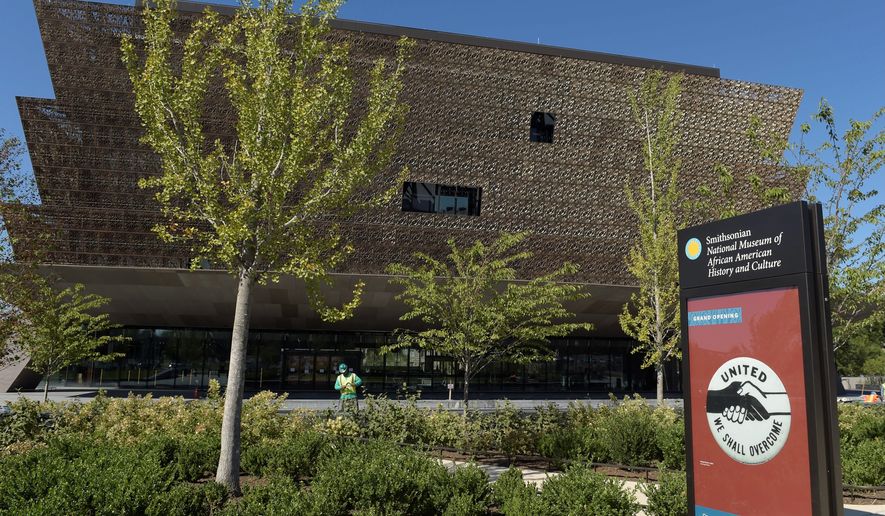Tucked inside the massive coronavirus relief bill Congress rushed through this week is approval for a new National Museum of the American Latino and a new women’s history museum, both to be added to the Smithsonian’s collection and built near the National Mall in Washington.
Lawmakers said it was time to give both demographics their due, amid a year of identity-based racial justice protests.
The move comes four years after the Smithsonian opened its National Museum of African American History and Culture, and 16 years after it opened the doors on the National Museum of the American Indian.
“The Smithsonian Institution’s renowned museums serve as powerful representations of our history, culture and values — but they have long been incomplete,” said Rep. Zoe Lofgren, California Democrat. “The American story is a diverse collection of unique experiences and, for too long, the stories of American Latinos and women have been underrepresented or untold.”
The women’s museum still lacks an official name, but the Latino museum already has one. Sites for both are to be picked within two years. The legislation requires they be in Washington, and suggests two sites for either museum and two additional sites for the Latino museum specifically.
The museums are charged with educating visitors on each community’s contributions to art, history and culture in the U.S. And perhaps to head off problems that popped up with the African American museum, the legislation orders both the Latino and women’s museum to make sure they have exhibits with a “diversity of political viewpoints.”
The African American museum faced a backlash after it opened without any exhibits focusing on Supreme Court Justice Clarence Thomas, only the second Black person to sit on the high court. Critics charged that the museum excluded him because of his conservative jurisprudence. The museum added an exhibit featuring Justice Thomas in 2017, a year after it opened.
A Latino museum has been in the works for more than a decade, with a commission formed in 2008 to study its viability. The commission reported back in 2011 in favor of the idea.
An attempt to pass the bill creating the museum was blocked earlier this month by Sen. Mike Lee, Utah Republican, who said it would “divide an already divided nation with an array of segregated, separate-but-equal museums for hyphenated identity groups.” He said the government, and the Smithsonian, should be working to unify the country.
Sen. Robert Menendez, New Jersey Democrat and son of Cuban immigrants, said Sen. John Cornyn, Texas Republican, turned to leaders and asked them to include the museum in the 5,000-page coronavirus relief bill Congress wrote and passed in hours on Monday.
Mr. Menendez said Mr. Lee had “brazenly contorted the language of the civil rights movement.”
“We have overcome tremendous obstacles and unbelievable hurdles to get to this historic moment, but, as I’ve said before, Latinos are used to overcoming obstacles,” he said after the bill passed.
Mr. Cornyn said there’s a dearth of understanding in the country of its Latino history.
“From the brave soldiers who fought in the Texas Revolution, to the civil rights activists like Cesar Chavez, cultural icons like Selena, and leaders of all types in our communities — generations of Latino Americans have shaped our country as it is today,” Mr. Cornyn said.
The women’s museum has been under study since 2014. Its supporters said the country needs a space dedicated specifically to the contributions of women to U.S. life and culture.
“Women have been a central part of American history from our founding to the present day in every way, whether it’s science, business, the arts or politics,” said Sen. Dianne Feinstein, California Democrat. “A permanent museum to celebrate those contributions and tell the stories of so many incredible women is long overdue. I’m pleased to see our bill to establish a Smithsonian museum for women’s history finally pass.”
• Stephen Dinan can be reached at sdinan@washingtontimes.com.




Please read our comment policy before commenting.